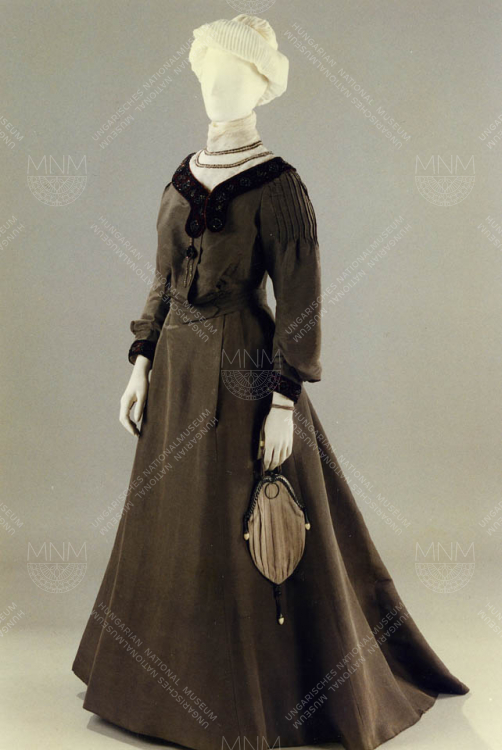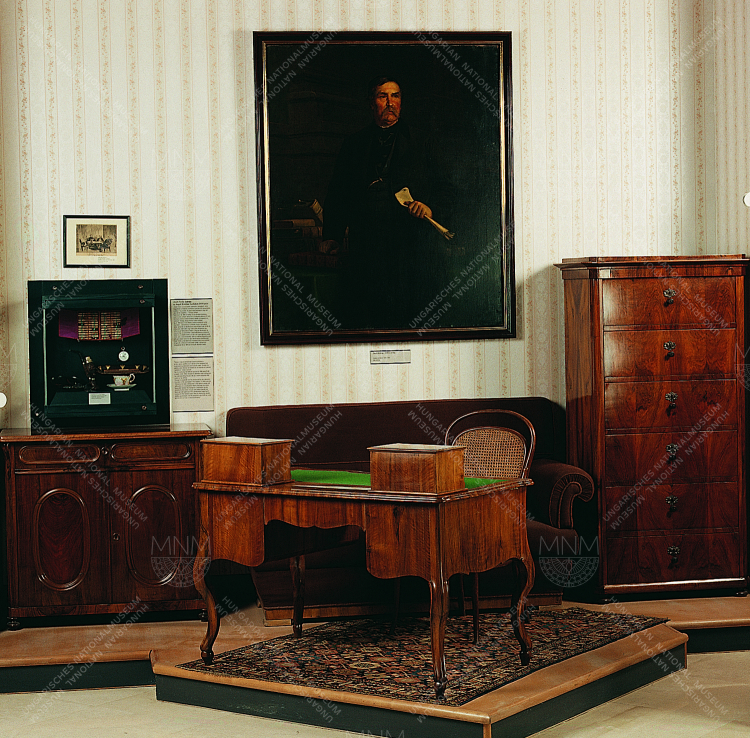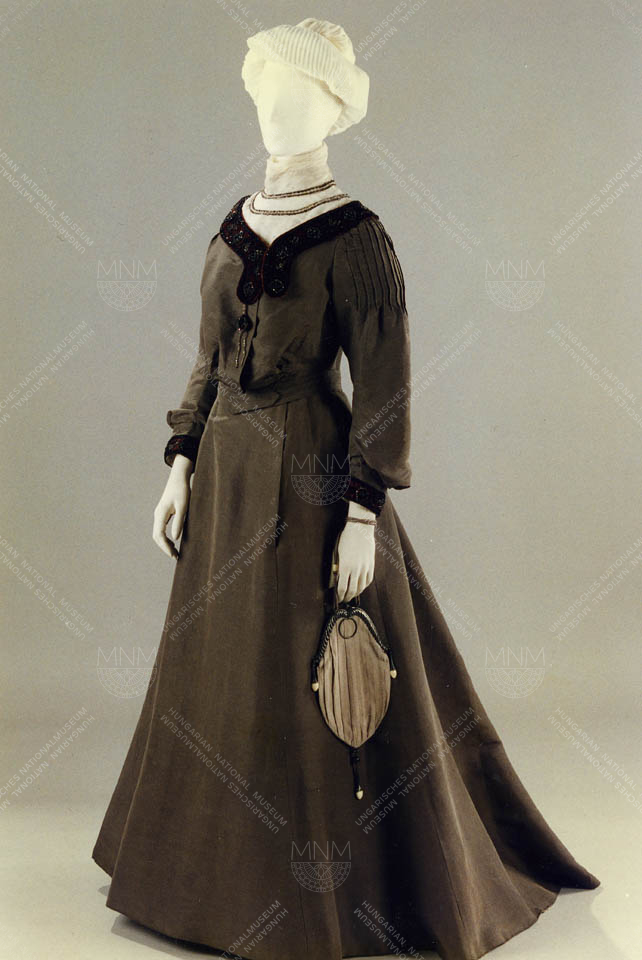
Room 14
By means of objects recalling the post-1848–49 reprisals, the pro-Kossuth exiles, the absolutism of the Bach period, and the 1867 compromise agreement with Austria that created the Dual Monarchy, visitors can form a picture of the economic and scientific-technological progress characteristic of this era, as well as an insight into its social tensions. A re-creation of part of a street shows the fashions at the end of the 19th century, a feverish time on account of the grandiose Millennial Celebrations of 1896. The coffee-house interior recalls a facet of social life during these years.
Interesting facts:
A precursor of radio, a service delivering news by telephone was introduced in 1893, in Budapest first of all. In the same year, electric lighting was switched on in the busiest streets of Pest.
After selling his estate at Kehida, Ferenc Deák moved into the Queen of England Hotel in Pest, taking favourite pieces of furniture with him. These can be seen in the exhibition. He later took them with to his last place of residence, the home of his foster daughter.















